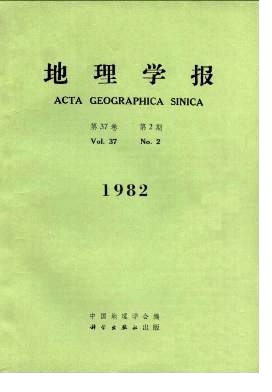Yao Shi-mou, Wu Chu-cai
A city is a product resulting from a deep-going change in the development of social economy and social division of labour. Along with the evcrrising of production level in industry and agriculture, a tremendous change in the urban population structure has taken place, in which more and more rural population is flowing into the city, thus giving an added impetus to their ever-growing development and creating a problemknown commonly as the so-called "urbanization of population’’. Generally speaking, this is an inevitable tendency in the development of social productivity as well as a sign of social progress.At present, China’s rural area is overweighed with population, low in agricultural productivity, under-developed in commodity economy and is rather far from being urbanized. Up to 1979, the population proportion in cities and towns in our country was recorded as 13.3%, a percentage that is not only much lower than that of the world (about 40%), but also than that of those countries in the third world, such as India, nevertheless, in the course of the accomplishment of four modernizations, the transforma-tion of agricultural production system, the rapid growing in agriculture, industry and trade and the application of agricultural mechanization, quite a number of strategical problems, such as how to transform those surplus labourers who are free from their farmlands and which road to take towards rural urbanization, lie ahead of us and dese-rve to be seriously dealt with. We hold that in addition to turning the rural population directly into the urban population, another way should be sought out in order to meet the requirements of our national conditions and the level of our productive development. Over the past years, there has existed in the rural population structure a new kind of population by the name of "both workers and peasants". This is a new emerging force with full vitality and promising prospects, which is not only a principal approach to the solution of superfluous labourers in the countryside, but also a special or transi-tional form of urbanizing our rural population.The so-called "worker-peasant population", or "quasi-urban population" named for those who are engaged in non-agricultural activities (chiefly in industry) in the rural area, is a transitional type between urban population and rural one, resulting from far-reaching cause of social economy and objective inevitability. Firstly, as seen from our history, the close combination of agriculture with the handicraft industry and merging altogether into one is the historical foundation of farming and developing such kind of population: secondly, owing to too many people working on less farmlands, it is an inexorable product that the commune-and brigade-run enterprises will follow the road of multi-purpose management of agricuulture-industry-commerce, and "develop in depth in agriculture", and thirdly, it is a result from the implementing of economic policies in the countryside and the effect of economic lever.It is now estimated that the amount of worker-peasant people is close to 30,000,000, accounting for about 3% of the total national population and about 10% the total la-bourers in the countryside. In China, the population in small cities and towns, especially in those commune-affiliated towns, is commonly formed by that of cities and towns (i.e. non-agricultural population), rural population and that of both workers and peasants. And such worker-peasant population has become the major component part in their population structure. According to investigations in some of the counties in Jiangsu Province, the proportion of the worker-peasant people makes up generally 25-30%, or even up to 40-50%, the total urban population, becoming virtually a basic force in the commune-and brigade-run enterprises. In spite of the fact that during the time of readjustment in national economy, new problems and troubles are bound to happen in the development of such enterprises, its general orientation is correct and we should not lose our faith in or negat
